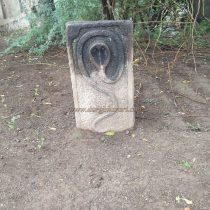JAINAGAR
TYPE : GADHI
DISTRICT : NANDURBAR
GRADE : EASY
Nandurbar, which once belonged to Khandesh, came into existence as an independent district after the partition of Khandesh. In this Nandurbar district, which is dominated by tribal, there were once not one or two but as many as 15 forts in the form of hill fort, ground fort and fortresses. These forts are not mentioned anywhere except the 7 forts mentioned in “Maharashtratil Gadkille” by Durg Maharshi Pramod Mande. In today's modern age, information about these forts is not visible even on the internet. I have tried to present the information obtained on this website when our Durgbharari group made a study tour of all these forts. It has 13 forts out of which 1 is hill fort, 3 is ground fort, 2 is Nagarkot (city fort) and the remaining 7 are fortresses. As most of these forts are located in or near the villages, the increasing population in the villages has encroached on the remnants of these forts and the apathy of the locals is also contributing to the decline of these forts.
...
Jayanagar Fortress is one of them. Once a part of Khandesh, Jayanagar became a part of Shahada taluka of Nandurbar district after the partition of Khandesh. Jayanagar Fortress is at a distance of 15 km from Shahada in Jayanagar village in South Nandurbar area. To visit Jayanagar Fortress, we first have to reach Nandurbar or Shahada. Nandurbar Jayanagar is 53 km away and can be reached via Prakash-Shahada-Kahatul. The Heramb Ganesh temple in Jayanagar is famous in this area. According to the information given by the pandit, the original temple was built by Ahilyabai Holkar and the Ganesha idol is from Holkar's time and the temple has recently been renovated. Behind the temple there is an old big stone gate and from this gate there is a way to go to the fort. On this way we get to see a beautiful carving of a snake. The remains of the Jayanagar fort are only a bastion and the foundations of the rampart visible at one place. The peculiarity of this bastion is that it is hollow on the inside. Such hollow bastions are not usually found in ground forts. Villagers know this bastion as “Tupa Buruj” and say that ghee was stored in it earlier. Due to the complete destruction of the inner remains of the fort as well as ramparts, the size of the fort and other remains cannot be estimated. The outer stones of the bastion were removed by the villagers to build houses and the bastion is still standing only on the basis of the soil used inside its construction. When asked about the fortress, the villagers say that it belongs to the Gosavi family. On the other side of the road, there are 5-6 memorials of this Gosavi family. Looking at the construction of it, it seems that they belonged to the royal family. 10 minutes is enough to see the bastion and memorials. There is no mention of fortress and Gosavi family in history. If the time comes to stay here, the Heramb Ganesha Temple can be considered as a spot.
© Suresh Nimbalkar




